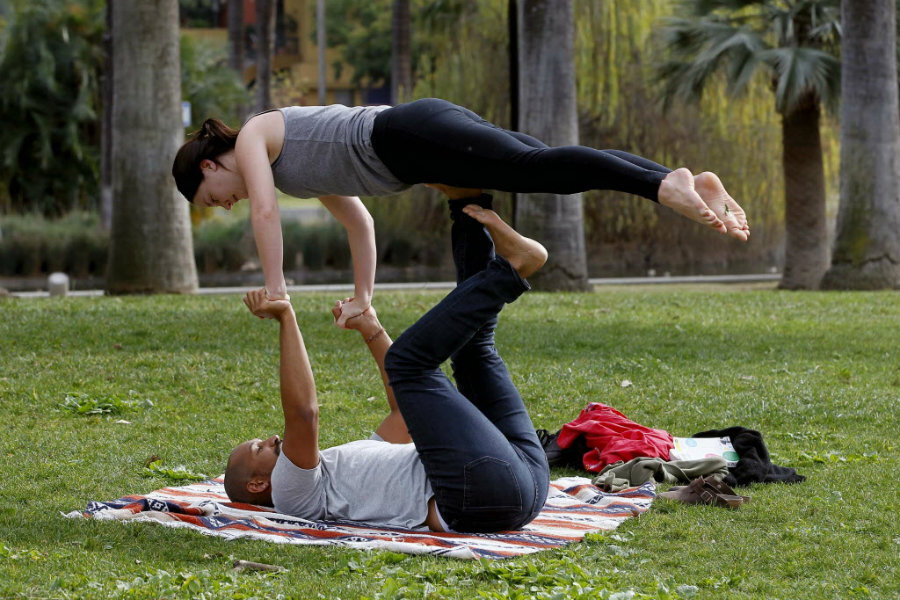Why this Montana lawmaker is bent out of shape over yoga pants
Loading...
Montana yogis, beware.
Rep. David Moore (R-Missoula) has introduced a bill to strengthen the state’s indecent exposure law in response to a group of naked cyclists who pedaled through the city of Missoula in August, the Associated Press reported.
House Bill 365 would broaden Montana’s current law to define as indecent “any device, costume, or covering that gives the appearance or simulates” a person’s private parts.
That includes tight-fitting beige clothing and yoga pants, which Rep. Moore told AP “should be illegal in public anyway.”
Form-fitting clothing – yoga pants and leggings in particular – has been a hot button issue over the past year, though the setting of the debate has often been individual schools or school districts, rather than whole states .
In 2014, high schools in North Dakota, Massachusetts, and Illinois all tried to enforce bans on leggings as part of their dress codes. The regulations resulted in petitions and mass walkouts across the country, with students protesting “the way girls were being ‘humiliated’ and forced to cover up,” the Guardian reported.
The demonstrations gave birth to the hashtag #iamnotadistraction; supporters took to social media to say that some dress codes being enforced on female students were sexist and unfair.
As The Christian Science Monitor put it:
Instead of shifting the focus from yoga pants to academics, the action taken by the school zeroed in on the girls and their fashion choices. It seems that rather than addressing disciplinary problems, more girls felt blamed for wearing “distracting” clothing in class than being reminded of the standing dress code.
Controversy around clothing in general is nothing new, and in fact tend to reflect conversations about larger issues of the day.
The Zoot Suit Riots of the 1940s spoke to the racial tension between Mexican-American youths and US servicemen, who felt that the ballooning trousers worn by the former was an insult to clothing restrictions during World War II.
The colorful outfits, embellished garments, and long hair of the 1960s hippie movement was also part of the response to the occupational and class-based culture that was mainstream at the time.
“Such resistance points out the larger structural issues,” Ruthann Robson, a City University of New York law professor and author of Dressing Constitutionally: Hierarchy, Sexuality and Democracy, told The Guardian.
Though Ms. Robson was discussing last year’s dress code protests in particular, her statement applies to conflicts around clothing in a broader sense.
Still, every argument has at least two sides and in Montana, Rep. Moore and retired professor Walt Hill said they drafted in House Bill 365 in the name of public decency: Last summer’s “Bare as You Dare” bike ride – when more than 100 participants rode through Missoula in various states of undress – sparked outrage among some residents.
"I want Montana to be known as a decent state where people can live within the security of laws and protect their children and associates from degrading and indecent practices," Mr. Hill told AP.
"I believe this bill is written preserving that reputation,” he added.








